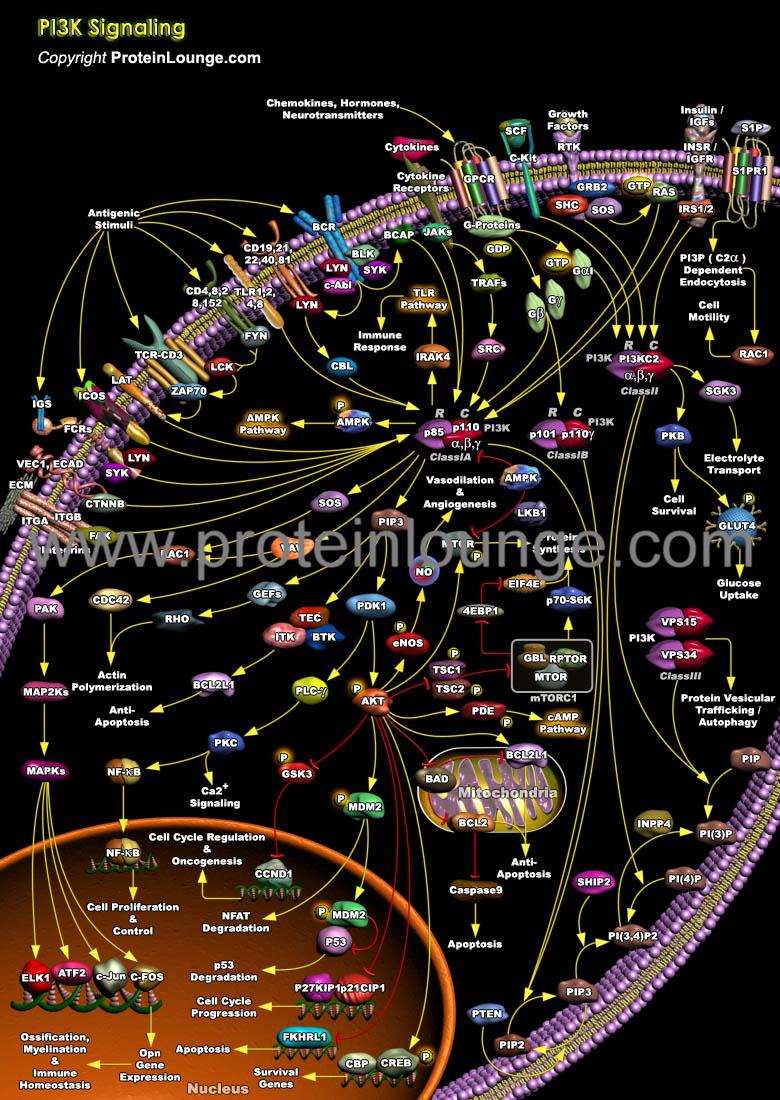Pathways
PI3K Signaling

Description:
The (Phosphatidylinositde-3-Kinase) family of enzymes regulate diverse biological functions in every cell type by generating lipid second messengers that ultimately results in the mediation of cellular activities such as proliferation, differentiation, chemotaxis, survival, trafficking and Glucose homeostasis. On the basis of structural similarities, the members are sub-divided into three classes; Class I, II and III. The Class I and II PI3Ks are found only in metazoa, whereas, Class III PI3Ks are also found in unicellular eukar...
References:
-
Regulation of glucose metabolism in T cells: new insight into the role of Phosphoinositide 3-kinases.
Front Immunol. 2012 Aug 7;3:247. doi: 10.3389/fimmu.2012.00247. eCollection 2012. -
Molecular Pathways: Targeting the PI3K Pathway in Cancer-BET Inhibitors to the Rescue.
Clin Cancer Res. 2016 Jun 1;22(11):2605-10. doi: 10.1158/1078-0432.CCR-15-2389. Review. -
Classes of phosphoinositide 3-kinases at a glance.
J Cell Sci. 2014 Mar 1;127(Pt 5):923-8. doi: 10.1242/jcs.093773. Review. -
Epidermal Growth Factor Receptor Cell Proliferation Signaling Pathways.
Cancers (Basel). 2017 May 17;9(5). pii: E52. doi: 10.3390/cancers9050052. Review.
You can view details of this pathway by subscribing:
Copyright © Protein Lounge Inc.
Terms & Conditions

